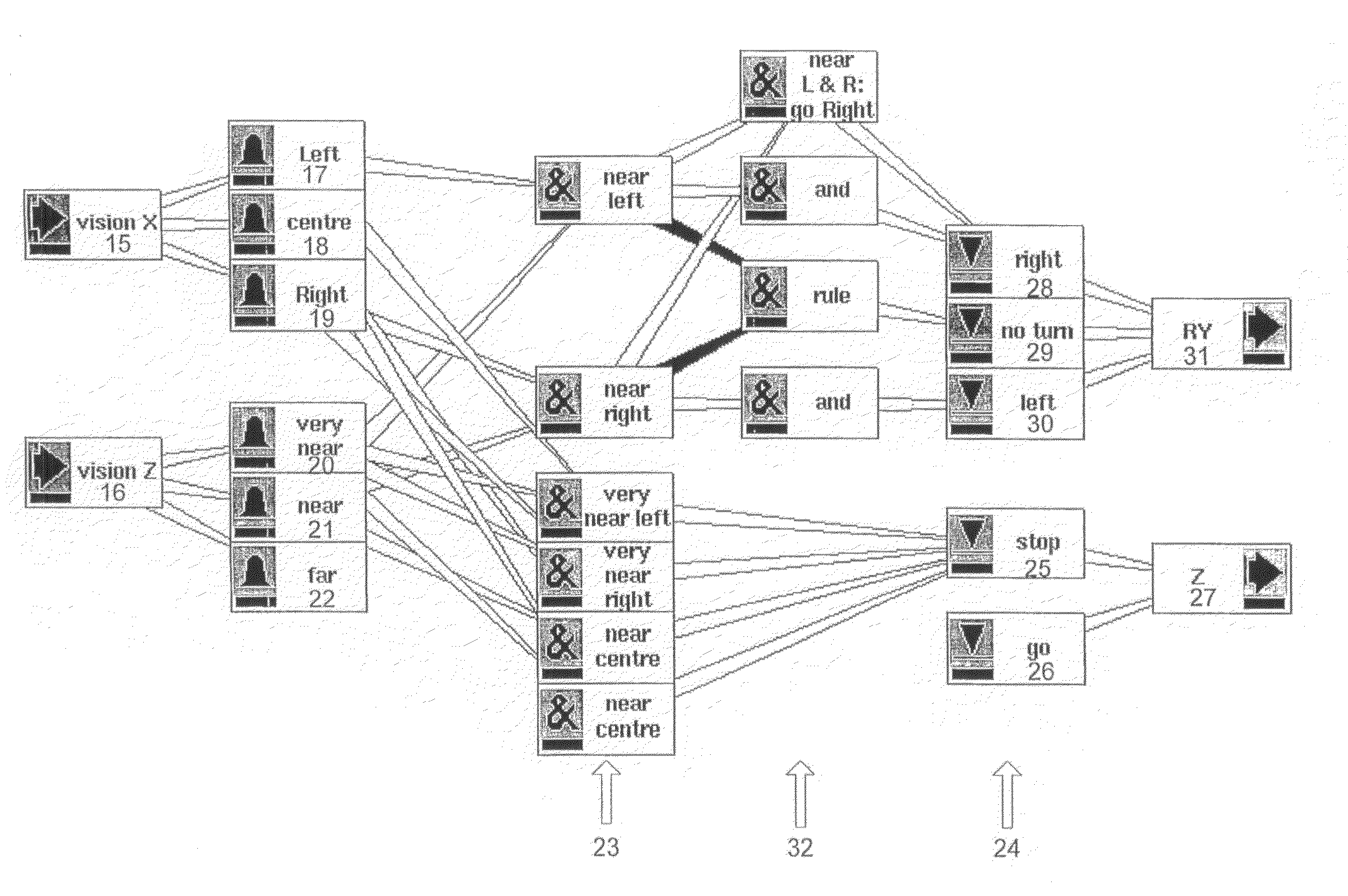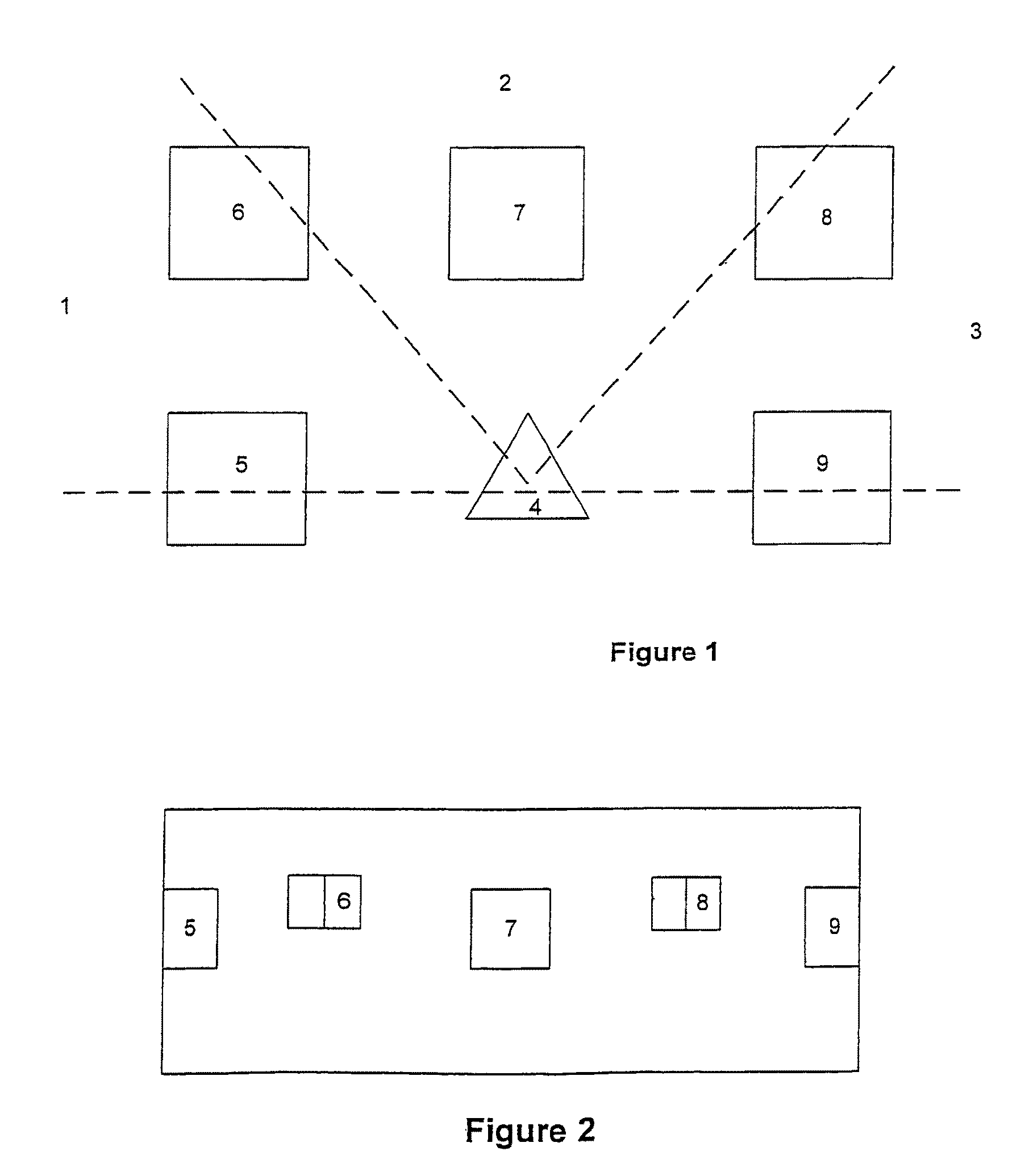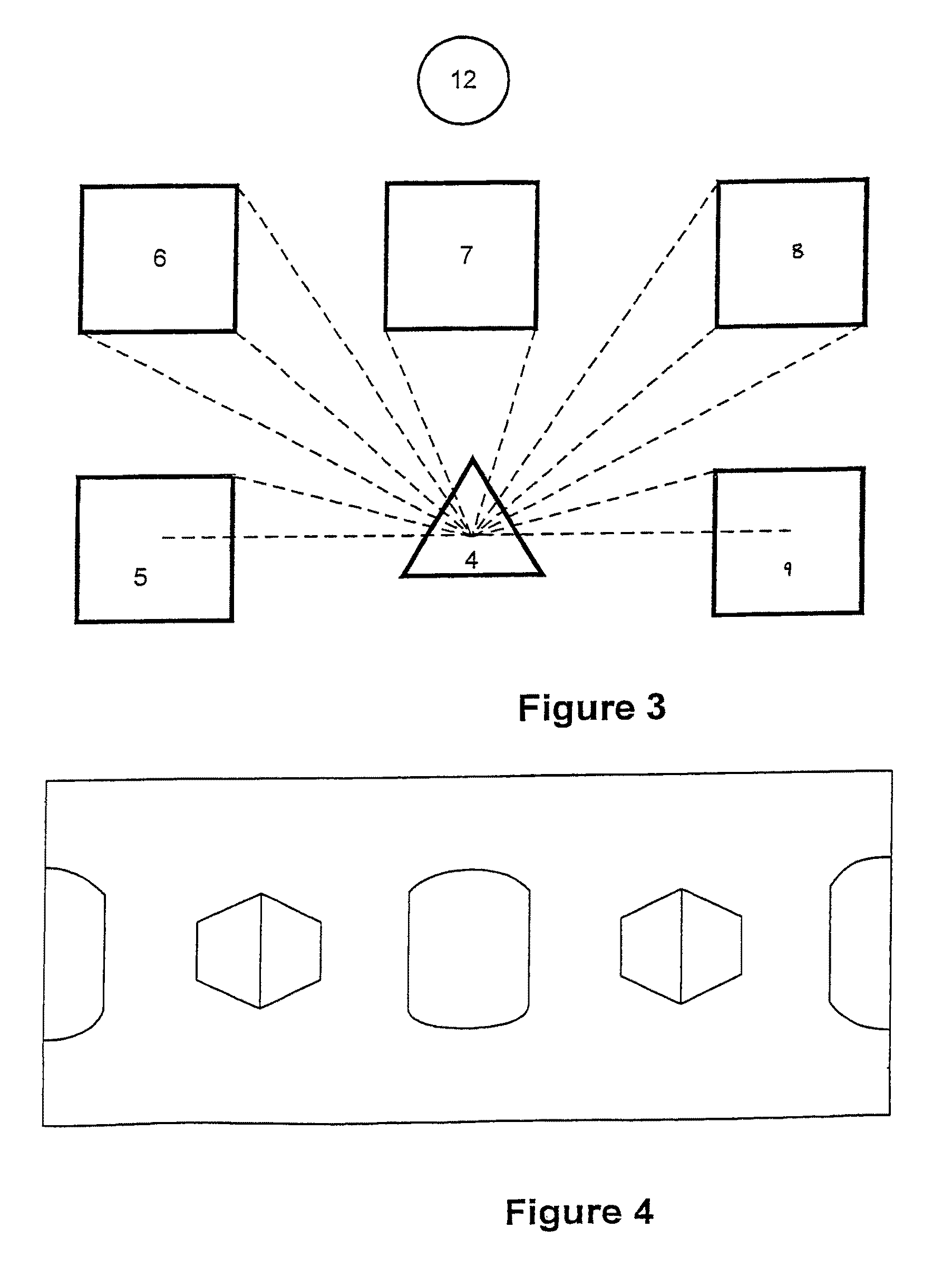Method of animating a graphics character using fuzzy processing layers
a fuzzy processing and animation technology, applied in the direction of pulse technique, logic circuit, instruments, etc., can solve the problems of high computational cost, difficult and inefficient representation of topological features such as holes, concave shapes and profiles in a non-vision-based system, and computationally expensive to provide accurate input information
- Summary
- Abstract
- Description
- Claims
- Application Information
AI Technical Summary
Benefits of technology
Problems solved by technology
Method used
Image
Examples
Embodiment Construction
[0045]The present invention discloses a method of determining the behaviour of an autonomous computer generated character based upon a generated image of the graphical environment around the character rendered from the viewing perspective of the character. This approach simplifies computation and enables realistic character behaviour to be achieved relatively easily.
[0046]In this specification the word “image” refers to an array of pixels in which each pixel includes at least one data bit. Typically an image includes multiple planes of pixel data (i.e. each pixel includes multiple attributes such as luminance, colour, distance from point of view, relative velocity etc.).
[0047]The first step is to render an image of the environment as viewed from the perspective of the character for which behaviour is being generated. Where a relatively narrow range of view (e.g. 90°) is utilised to determine character behaviour, standard scanline rendering approaches may be employed. Ray tracing met...
PUM
 Login to View More
Login to View More Abstract
Description
Claims
Application Information
 Login to View More
Login to View More - R&D
- Intellectual Property
- Life Sciences
- Materials
- Tech Scout
- Unparalleled Data Quality
- Higher Quality Content
- 60% Fewer Hallucinations
Browse by: Latest US Patents, China's latest patents, Technical Efficacy Thesaurus, Application Domain, Technology Topic, Popular Technical Reports.
© 2025 PatSnap. All rights reserved.Legal|Privacy policy|Modern Slavery Act Transparency Statement|Sitemap|About US| Contact US: help@patsnap.com



